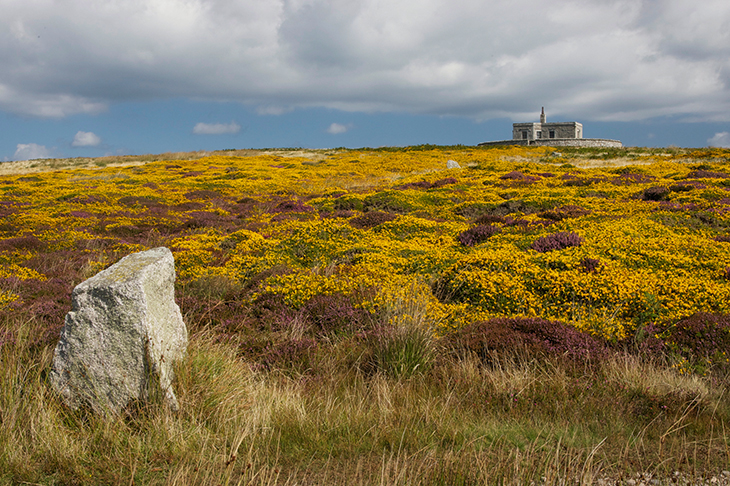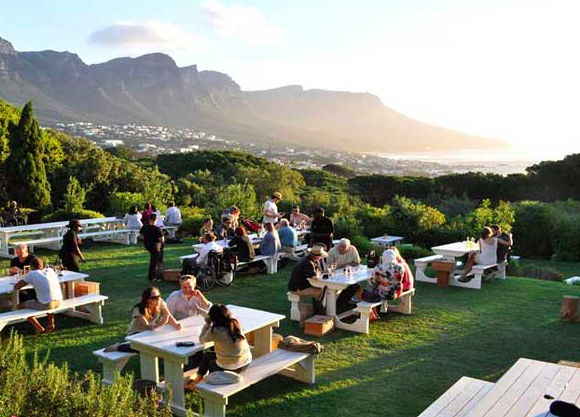About halfway across Lundy, if you’re trudging from the landing bay towards the north lighthouse, there’s a tiny holiday cottage all on its own. It’s a mile and three quarters from the island’s village and very basic inside. There are two bunks in the single bedroom; a dodgy oven in the kitchen that only works if you jam a wooden stick between the wall and the ‘on’ button; and, in the sitting room, the kind of gas lights that died out in the 1930s, because there’s no electricity — and so no wifi or TV — in the whole place.
In other words, it’s bliss — at least for the right sort of person. Tibbets, as the cottage is called, is perched on the highest point of the island with views over the Bristol Channel on two sides. A Royal Navy lookout until 1926, it’s now owned by the Landmark Trust, a charity set up 50 years ago by the philanthropist Sir John Smith and his wife, Christian, to try to prevent the loss of historic buildings that were too small or insignificant to attract the attention of the bigger National Trust.
Which is why you can stay there — and at lots of other historic properties, from a fisherman’s cottage in the Highlands, to a castle on the south coast of Devon — for surprisingly little. These buildings don’t have much in common. As Smith explained after founding the charity, ‘a body was required to tackle cases too desperate, troublesome or unfashionable for anyone else’. Crucially, he didn’t want them to become museums, to be ‘peeked at over a rope’, but to be living places which people could use as their own for a few days at a time.
So Britain owes Smith a lot. Later this year, the Trust will open its 200th building to the public, a restored medieval hall on the edge of the Brecon Beacons, with timbers that the restorers were excited to discover date back to the mid-15th century. It’s the result of a £4 million fundraising drive.
Part of the attraction of such places is that they are still unfashionable. None of them have TV or internet because the guests — ‘Landmarkers’, as they proudly call themselves — say they don’t want them. The furniture is mostly old-fashioned dark wood, and there are lino floors in the kitchens and bathrooms that wouldn’t look out of place in a down-at-heel boarding school. But they are clean, well-maintained, and those who stay in them tend to come back again and again, as the visitor books show.
As far as the mainland goes, the jewel in the Trust’s portfolio is the secluded hamlet of Coombe, on the north Cornwall coast near Bude. Oddly, it’s a stone’s throw from a vast GCHQ satellite station that looks like a James Bond film set. But down in the wooded valley, where all the properties are owned by the Trust, it’s as if you’ve stepped back in time. A stream trickles past thatched cottages (and a pretty orchard) towards the sea at Duckpool beach, half a mile away.
There’s history here — two of the cottages were once inhabited by an eccentric and celebrated Victorian vicar, Robert Hawker, who excommunicated his cat for mousing on Sundays — but more than that, there’s escape. A note in the visitor book gives a flavour of it: ‘The clocks changed last weekend but we didn’t find out till Wednesday.’
Got something to add? Join the discussion and comment below.
Get 10 issues for just $10
Subscribe to The Spectator Australia today for the next 10 magazine issues, plus full online access, for just $10.
You might disagree with half of it, but you’ll enjoy reading all of it. Try your first month for free, then just $2 a week for the remainder of your first year.














Comments
Don't miss out
Join the conversation with other Spectator Australia readers. Subscribe to leave a comment.
SUBSCRIBEAlready a subscriber? Log in